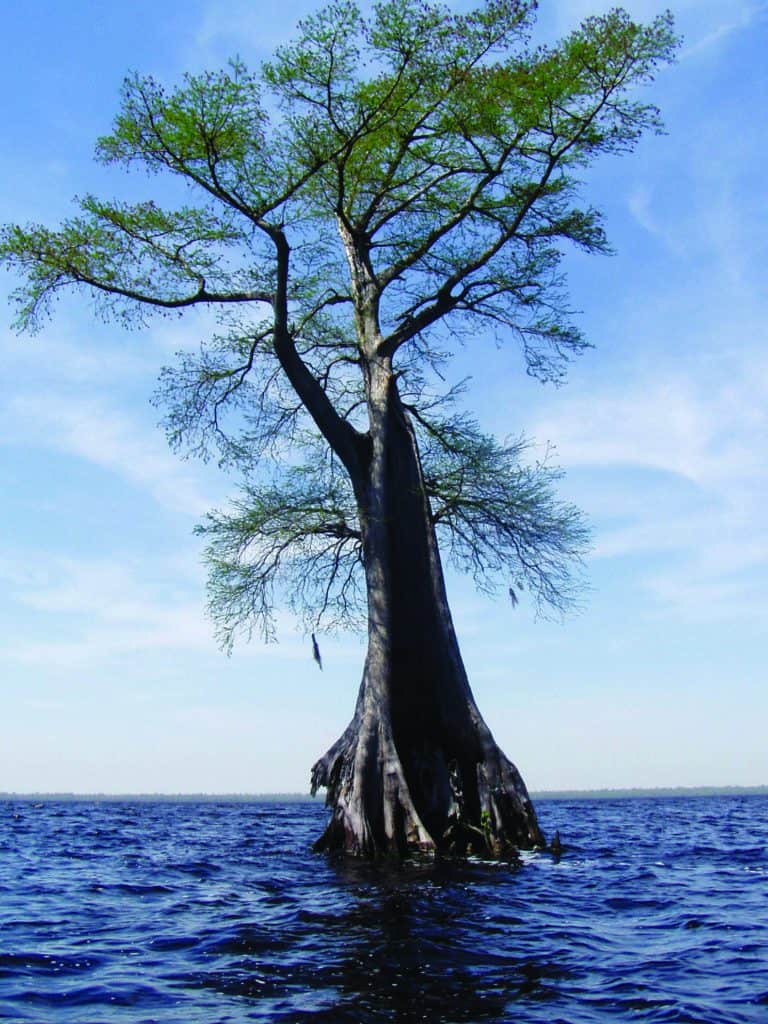Wetland Giants

If you have ever Googled the Great Dismal Swamp, you’ve probably seen the beautiful images of cypress trees surrounded by the amber colored waters of Lake Drummond and the Canal. Cypress trees are slow growing North American natives that grow in wet, boggy soil. Their native environment is constantly wet, but after they are established these trees grow well on dry land and can withstand occasional drought. There are two types of cypress trees found in the United States: bald cypress and pond cypress.
Both types of cypress trees grow well in areas with lots of water. Bald cypress grows naturally near springs, lakes, in swamps or in bodies of water that flow at a slow to moderate rate. In cultivated landscapes, you can grow them in almost any soil. Pond cypress trees prefer still water and do not grow well on land. These giant trees are long living trees that regularly reach up to 600 years in age!

Cypress trees have a straight trunk that tapers at the base, giving it a soaring perspective. These deciduous conifers have short needles with a feathery appearance. In fact, they get the name “bald” cypress due to the shedding of their beautiful brown or golden leaves during the winter months. Cypress branches are often seen with willowy clumps of Spanish moss draped across their branches.

Mature cypress tress are valued as a rot-resistant heartwood and have been widely used to make fence posts, doors, flooring, cabinetry, boats and much more. Today, cypress trees are harvested less for timber due to fewer numbers of trees and the difficulties of logging in swampy areas. Cypress trees are excellent at soaking up floodwaters and preventing erosion. They trap pollutants and prevent them from spreading. These towering trees serve as breeding grounds for frogs, toads and salamanders.
Bald cypress, found at the swamp, form “knees”, which are pieces of root that grow above the ground in odd and sometimes mysterious shapes. Knees are more common for trees grown in water, and the deeper the water, the taller the knees. Some knees reach a height of 6 feet. Knees are thought to help transport air to the drowned roots underground and help anchor the tree.

Don’t forget to bring your camera with you when visiting the Dismal Swamp or Lake Drummond. You might just see wood ducks or bald eagles nesting in the hollow trunks and treetops of these wetland giants!
Source:
https://www.nwf.org/Educational-Resources/Wildlife-Guide/Plants-and-Fungi/Bald-Cypress
http://gardeningsolutions.ifas.ufl.edu/plants/trees-and-shrubs/trees/bald-cypress.html
https://www.usgs.gov/media/images/great-dismal-swamp-lake-drummond
